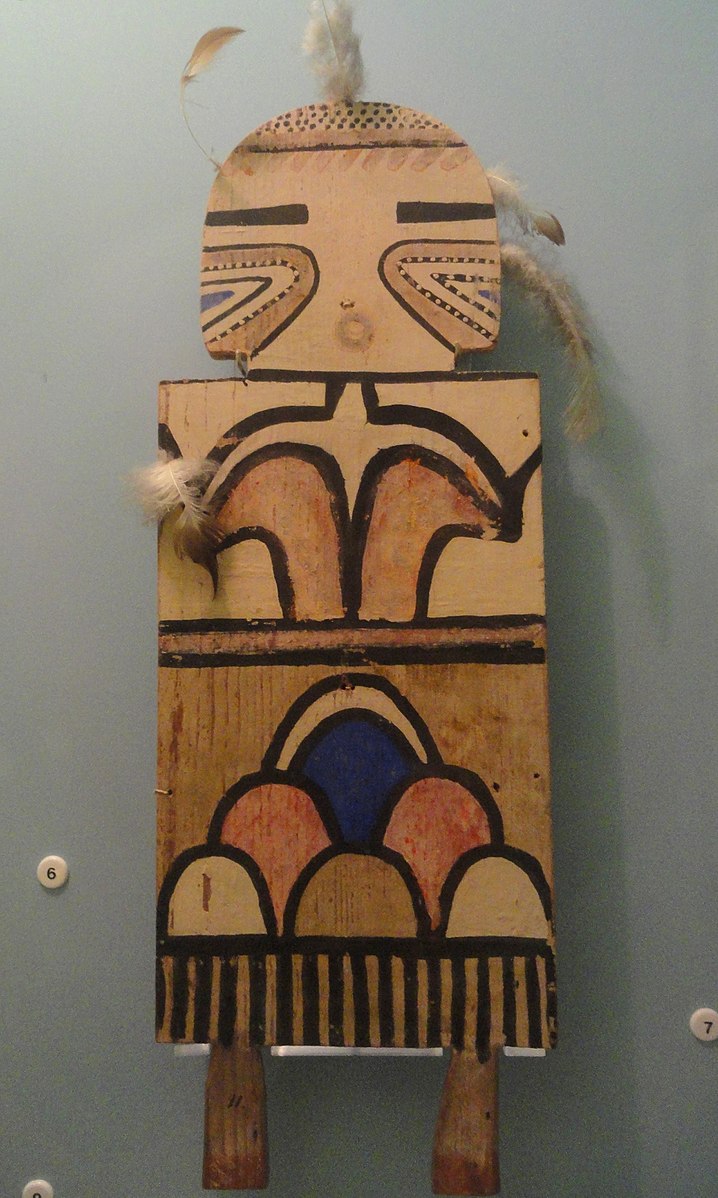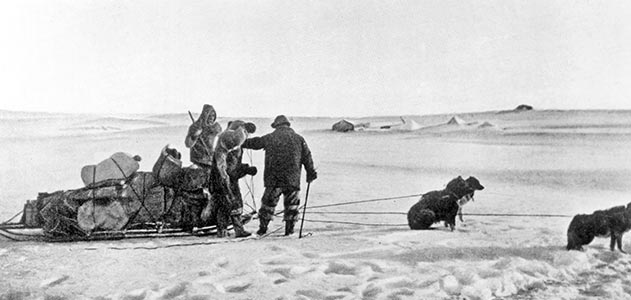Javanese Wayang Shadow Puppets on display at the University of Hawaii.
Last April, the Peabody Museum celebrated its 150th anniversary by unveiling a new anthropological collection entitled All the World is Here: Harvard’s Peabody Museum and the Invention of American Anthropology. Boasting over 600 items from Asia, Oceania, and the Americas, the collection, according to its curators, invites visitors “to be immersed in the fascinating story of a Victorian-era museum’s rise alongside the then-emerging field of American anthropology.” The exhibition aims to create a critical space where visitors can come to terms with the complicated colonial history of anthropological collections and examine the moral foundations of the discipline itself.
With this goal in mind, the collection focuses more on historical anthropologists than their subjects. The exhibition, for example, presents writings and household items which belonged to Frederic Ward Putnam, the museum’s second director and Harvard’s first anthropology professor. The colonial underpinning of his work is mentioned with ambivalence: the intersection of “modernism” and “European colonialism,” the plaque over Putnam’s diaries explains, compelled Putnam to “the study…[the] rapid changes in indigenous cultures.” Even when the museum directly addresses its colonial history, it places the emphasis and the blame on European colonizers, portraying American academics as passive observers instead of actors who directly participated in and profited from the exploitation of colonized peoples. In this way, the museum presents colonialism as the dark, distant backdrop of a period characterized in the United States by the enlightened quest to learn and study, and Putnam as the heroic leader of this pursuit. Near Putnam’s diary, another plaque praises Putnam’s efforts to protect and preserve indigenous archaeological sites, implying that Putnam — and, by extension, the Peabody museum — is a hero by nature and a colonist only by an accident of his time.
The Peabody’s somewhat restrained admiration for Putnam’s role in the history of American anthropology reveals a tension inherent to this kind of exhibit: the inability to be truly neutral or transparent. The museum’s choices about which voices and experiences are featured and which are omitted create a specific historical narrative, one that can never be entirely apolitical. Determined to cast itself as this story’s hero, the museum weaves a story of a discipline with a troublesome past redeeming itself through new, more egalitarian practices. Accordingly, the museum provides glimpses into anthropology’s painful past: on display, for example, is a late-19th century osteometric tool kit, used by phrenologists to measure head shapes and sizes. One plaque in the museum, titled Then & Now: the Ethics of Collecting, criticizes the immoral behavior of “financially motivated” army engineer and collector Edward G. Fast. But while the “then” is problematized, the “now” remains largely unscrutinized: the plaque merely says that Fast’s collection “would be considered unethical today.”

A Hopi Paho, historically used during dance rituals, on display at the Harvard Peabody Museum.
The collection’s critique lies in a self-absolving contrast between the past and present, which remains unscrutinized. Although much of the collection is comprised of “typical” anthropology museum items, such as Hopi ceramic pots and Javanese puppets, the Peabody does not examine its current position as the owner and holder items that historically belonged to other cultures. Instead, it turns a critical eye towards its past. A feature piece of the collection—and a symbol of the collection’s postmodern quest to interrogate its past—is a large, weathered sled which hovers suspended under snow-like pieces of glass. A plaque under it explains that “U.S. Admiral Robert E. Peary (1856-1920), later credited with ‘discovering’ the geographic North Pole, used [the] dog sledge during his 1891-1892 expedition to North Greenland.” The quotation marks around the word “discover” reveal the museum’s awareness of the irony of glorifying imperialistic exploration journeys, but the stately presentation of the raft speaks to a persistent, if subconscious, reverence for these explorers. This object exemplifies the fundamental hypocrisy of the Peabody’s collection: it uses historical critique to excuse itself from the more difficult tasks of evaluating current anthropological practices and assessing the messages implicitly communicated through the exhibit.

Robert Peary and Frederick Cook during their expedition in North Greenland.
Any effort to decolonize the museum industry must address the issues inherent to producing historical narratives within the crooked power structures left behind by colonialism. By recognizing and expressing willingness to grappe with this complicated history, the Peabody has taken its first step. But now, the museum must turn its attention towards its current practices and their moral complexities. Recognizing that exhibits like All the World is Here amplify some voices while diminishing others, the Peabody needs to abandon its project of self-absolution in order to critically examine the effects of its current practices on the communities it claims to champion. To that end, the Peabody should increase its efforts to compile a diverse curatorial staff; in particular, it should ensure that representatives of the cultural groups whose objects it presents are invited to take leadership roles in designing exhibits. Moreover, its efforts to allow cultures to reclaim “object[s] of cultural patrimony” could be strengthened by programs aimed at expanding the accessibility of its exhibitions to an international audience: for example, establishing temporary exhibits outside of Harvard’s campus and even of the United States. The Peabody’s commitment to grappling with its past proves its determination to stay relevant in a postcolonial and postmodern society, demonstrating that the museum is willing to reimagine—and reconstruct—the the stories it tells and the relationships it fosters. Yet until it accepts and addresses its current problems—instead of its historical faults—the Peabody will not provide an adequate space for scrutinizing and “decolonizing” the museum industry.
Image Credit: Wikimedia/Haa900 // Wikimedia/Daderot // Wikimedia/Frederick Cook
